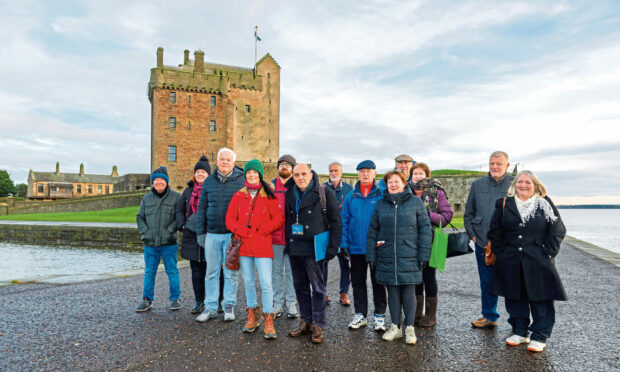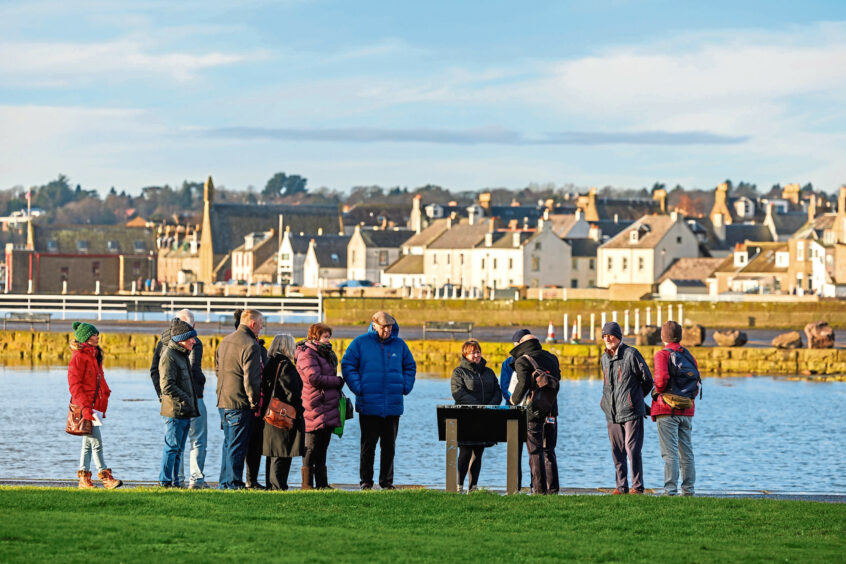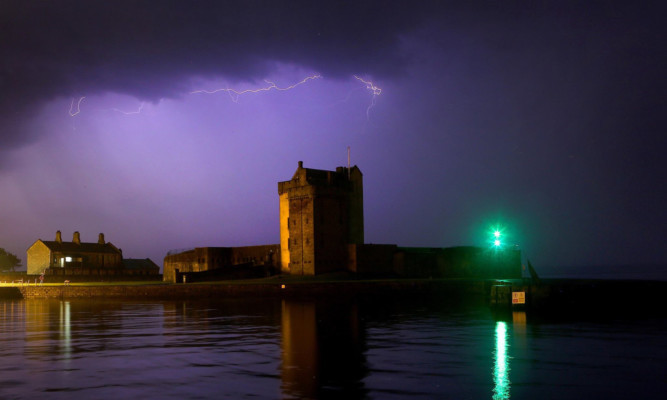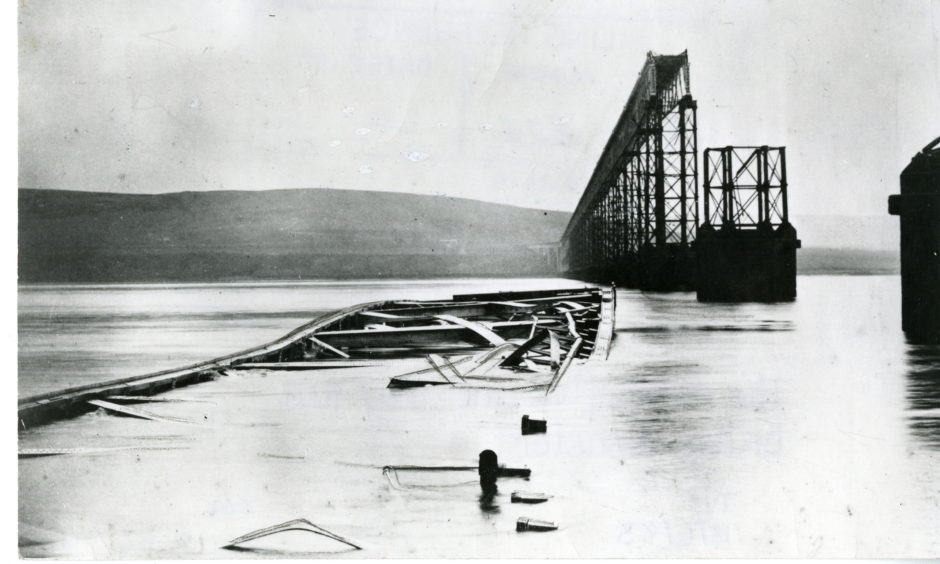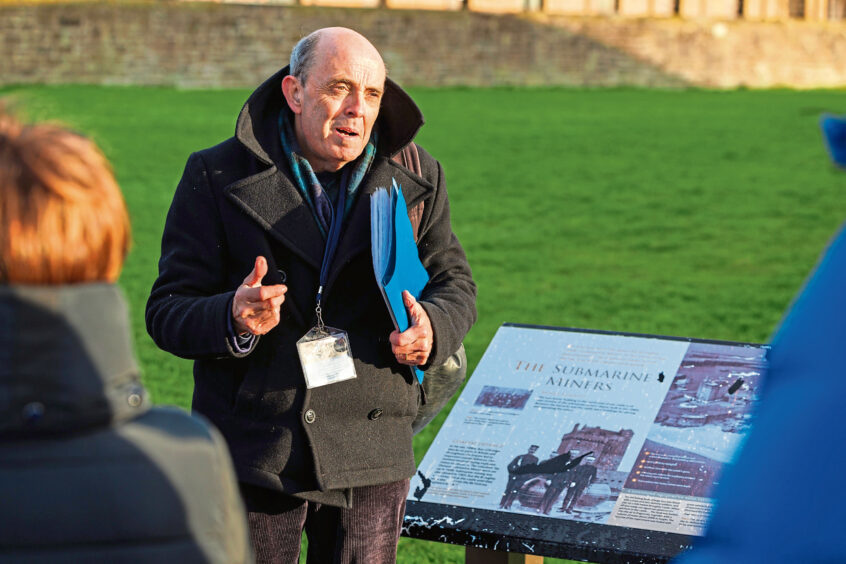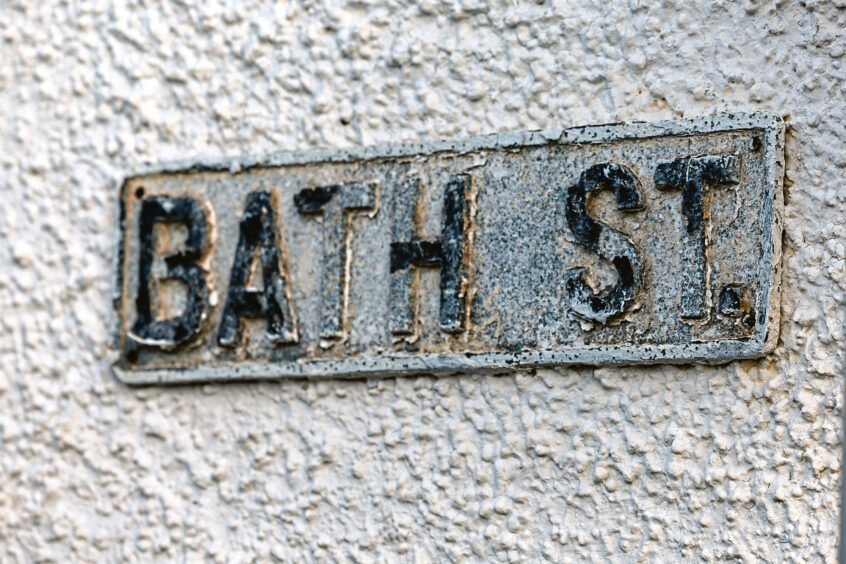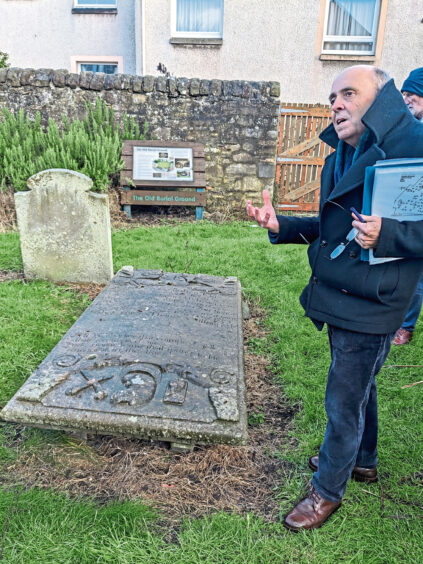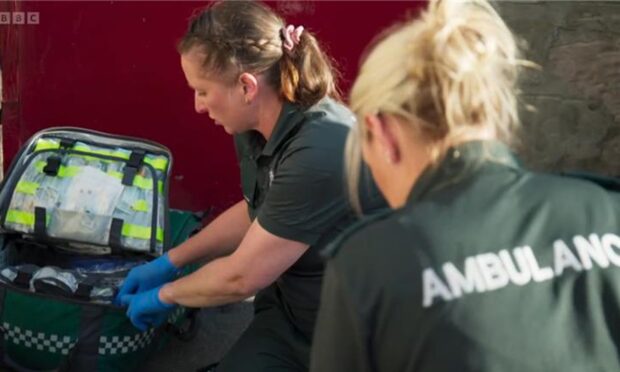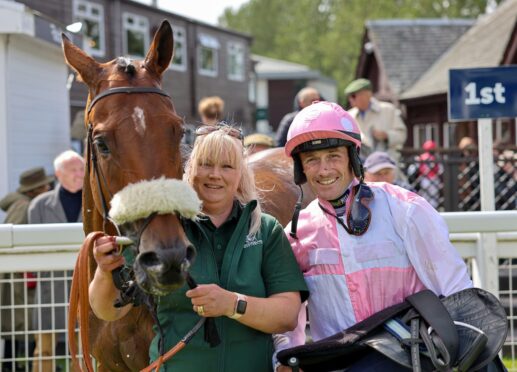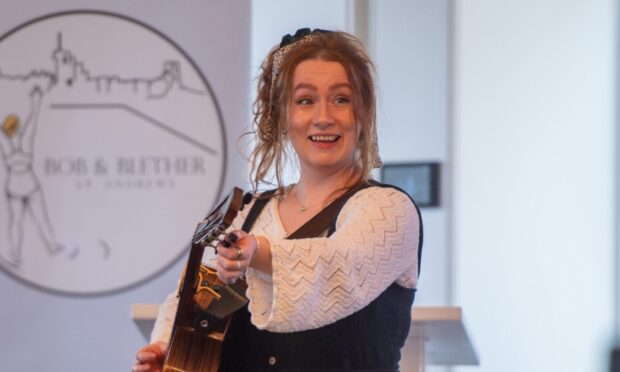Gayle explores the hidden gems of Broughty Ferry on a heritage and history tour around the area’s secret nooks and crannies.
It’s a beautiful, crisp, winter’s afternoon when I stroll up to imposing Broughty Ferry Castle.
The sun is low in the sky, but it brings a sense of cheer, and hope for warmer months ahead.
I’m joining Alastair Derrick – founder of Dundee Waterfront Walks – on a guided tour of the Ferry’s hidden nooks and crannies, including a ‘secret’ ancient burial ground.
There are 13 of us in the group and we linger for a while on the pier overlooking the silvery Tay while Alastair shares anecdotes about the castle and surrounding area.
“Broughty Ferry Castle is always said to have defended Dundee, the Ferry and the Tay since it was built around 1496,” he reflects.
“I’d lightly challenge this in view of the fact that when the troops of Henry VIII invaded Dundee in the mid-1500s and the troops of Cromwell in the mid-1600s, the castle put up no defence whatsoever!
Defence
“However, the castle was involved in defence during the First and Second World Wars. It’s chilling to imagine children playing at the playpark here, when there were once large gun batteries covering the estuary.
“But the fantastic viewing point at the top of the castle is a happy outcome of the war years, having been built during the Second World War to allow better watch to be kept.”
Alastair urges everyone to visit the castle, describing it as a “museum to the folk of the Ferry, wartime, and seashore”.
Shipwrecks
He also chats about the many shipwrecks and sunken vessels between Tayport and the Ferry, harking back to the 1800s – a result of dangerous tides.
The loss of one vessel, Nelson, led to the founding of Dundee’s first orphanage for boys and girls – later evolving into Carolina House.
Seventeen lives were lost during the May 1815 tragedy, with many children left fatherless.
Engineers
Alastair reveals how the harbour at the castle was the early work of engineers Thomas Bouch and Thomas Grainger.
The former, Bouch, famously went on to design the doomed Tay Rail Bridge, which plunged into the water during a storm on December 28, 1879, killing 75 passengers.
Ornate lampposts
Heading towards the old part of the town, Alastair points out a series of stunning and ornate lampposts on the waterfront.
“These pre-date the merging of Broughty with Dundee in 1913 and have beautiful badges on the base, reflecting this. “Many people just pass without noticing.”
Rich versus poor
Alastair talks of how the rich “grew very rich indeed” in Victorian and Edwardian Broughty Ferry, with the super-wealthy inhabiting mansions built by the city’s jute barons.
He adds: “At the same time, those in the fishing community were often living in poverty, only a matter of streets away.”
Alastair also notes a yard close to a house, and says this is where donkeys, used to give rides on the beach, were once stabled. Who knew!
When we’re deep into the more traditional fishing area of the Ferry, he waxes lyrical about what life would’ve been like for folk who lived here… including some rather bawdy characters! I’ll say no more!
“Bath Street is so-called because there was a bath house opposite,” he explains.
“People wouldn’t have had their own baths, so they all went to communal ones.”
Memorial
We pause at a memorial to PC Robert Stirrat, erected at the foot of Dundas Street in April last year. Alastair began campaigning for it in 2021, around the 80th anniversary of the young PC’s death.
“He was the only police officer to lose his life, aged 24, during the Second World War, as a civilian in Dundee,” he laments.
“He was fatally wounded trying to prevent a mine – which had washed up – from washing back out into shipping lanes.”
Secret graveyard
A highlight of Alastair’s tour is visiting the little-known 17th Century Fisher Graveyard, off Chapel Lane.
It’s locked but you can gain access by obtaining a key from nearby Ship Inn.
It’s a truly unusual burial ground – a hidden gem overlooked by tenements, with many gravestones erected in memory of fishing families, and tragically, some very young children and those who died in infancy.
While some stones are badly weathered, others boast relatively well-preserved engravings of skulls, crossbones, cherubs and ships.
Some honour shipmasters and men lost at sea, as well as farmers and other tradesfolk.
Alastair notes one grave in which the engraver has missed out the letter ‘E’ in the word ‘Erected’! I wonder what he or she could’ve possibly been doing to have been so distracted!
“It was the burial ground for a pre-reformation chapel, abandoned about 1670,” he says. “It was closed permanently in the 1860s after a severe outbreak of cholera among locals.”
The old Mort House, used to keep bodies prior to burial, remains pretty much as it would’ve been, “back in the day”.
RNLI
The tour concludes at the RNLI shed, where Alastair discusses the loss of the lifeboat Mona in 1959 and pays tribute to the current boat and crew.
- Alastair’s Ferry Tours last 90 minutes. A donation is made by Dundee Waterfront Walks to the lifeboat from every Ferry Tour ticket sold. Well-behaved dogs on leads are welcome.
- Alastair runs other themed tours on the last weekend of the month in winter and most weekends from spring onwards. Private tours can also be arranged. dundeewaterfrontwalks.scot
